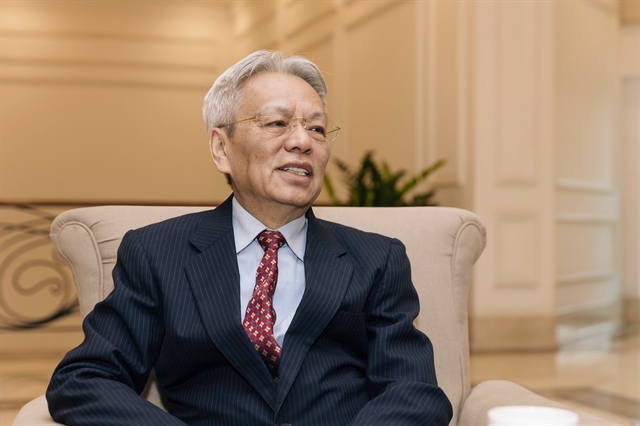 Opinion
Opinion


|
| Phạm Lê Phú, EVNNPT general director. — Photo baodauthau.vn |
Phạm Lê Phú, General Director of Việt Nam's National Power Transmission Corporation (EVNNPT), spoke with Đấu Thầu (Bidding) newspaper about the safe operation of power transmission systems in the coming rainy season.
The rainy and stormy season is coming. What has EVNNPT prepared to ensure safe operation of power transmission system?
The rainy season begins every June and July. This natural occurrence greatly affects the management and operation of the power transmission system.
In order to proactively respond to these weather conditions, from the beginning of the year, EVNNPT plans to prevent floods and storms.
Natural disaster prevention and control teams have been set up to check and fix equipment defects on the line, prepare materials, vehicles, and forces to quickly handle natural disasters. The teams have also developed storm scenarios in which areas are divided by floods and landslides. The units have also worked closely with relevant localities and sectors to effectively prevent natural disasters and minimise damage caused by natural disasters.
The problems encountered in last year's rainy season, such as landslides and subsidence at the substations have been addressed.
When we receive information about storms we will closely monitor their development along with those of floods and long-term heavy rains and pass this information on to the mass media, through the Prime Minister, the Steering Committee on Natural Disaster Prevention and Control, and the relevant ministries. EVN will promptly deploy forces to prevent and overcome the effects of natural disasters as planned.
In order to effectively prevent rain and storms, it is very important to mobilise available resources right away.
Has EVNNPT taken into consideration a scenario in which the 500kV North-South power transmission faces failures and electricity poles break down due to heavy rain. What are the solutions to handle this situation in the shortest time?
The North-South 500kV power transmission system is currently managed and operated by four power transmission companies. The line has been designed to withstand storms and powerful winds.
However, under the impact of climate change, many extreme weather phenomena have been reported in many parts of the world and in Vietnam whirlwinds, heat, and even snow and ice in Vietnam’s northern region have occurred.
In order to cope with these phenomena, EVNNPT has assigned power transmission companies to develop disaster prevention plans if the 220kV and 500kV power poles collapse.
The companies are considering using materials to anchor the poles to prevent them from falling and preparing backup poles with a similar structure, or using the KEMA pole system.
The task force is always on duty to deal with these incidents.
If this scenario happens, we will coordinate with national and regional power distributors to ensure power supply and minimise impacts.
In case of heavy rain and storms, EVNNPT units will work with local authorities to mobilise human resources like police and military to offer support to be able to resume the power supply as soon as possible.
The development of rain and storms are increasingly complicated and unpredictable, especially during the COVID-19 pandemic. Do you think this is a challenge in operating power transmission system in this year’s rainy season?
I absolutely agree that it is a challenge.
It is a challenge for not only EVNNPT but also other sectors.
I am confident saying that we will ensure the safe operation of the whole power system in any scenario by being prepared and actively involving EVNNPT leaders and units.
What solutions does EVNNPT want to propose to local authorities in order to ensure safe operation of power transmission in the rainy season?
EVNNPT proposes local authorities work closely with transmission units to check the safety of high-voltage grid corridors and ensure that people do not fly kites or other objects, or burn fields near power lines to minimise the risk of an incident.
Local authorities should trim trees near the safety corridor of the transmission grid and strictly handle any violations.
They must also step up communication on saving power to avoid overloading lines and substations. — VNS